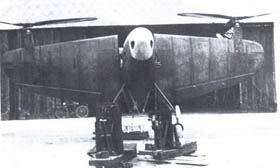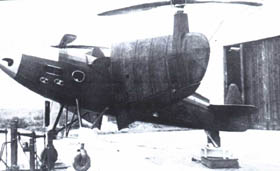In Yugoslavia or the territories
where it people lived before, there were several attempts of creating VTOL flying
machines. Some of them were studied only
theoretically, but few were practically built or flight –tested.
Among many of aeronautical designers in Yugoslavia there were
several persons of Russian origin, that escaped from the Empire after the Revolution in
October. One of them was Nikolai I Zuchenko,
who acted as a designer, projecting aircraft or other aeronautical innovations. According to his work in this field in Yugoslavia,
he deserved to be concerned as one of Yugoslav aviation pioneers.
VTOL problem occupied Zuchenko so deeply that he worked hard
to solve this matter accordingly. As result
of this consideration, studies and his imagination, based on the treatment of all such
projects ever initiated, he, during 1937, definitely ordered to the Supreme Air Force
Headquarter gasturbine generator patent and project –an idea of vertical take –off
aircraft. He also admitted that the project
is based on his earlier projects already submitted and offered before.
 Reduced model of such device was built in the Airplane
workshop of 1st Air Base Technical Park (original title)
The scale test–model of such apparatus was examined and
probed in proper laboratory. It occurred in the middle of July in 1937 and some lift force
affected, promising that the equipment could be applied and mounted on a flying machine.
Lifting force measured was found to be from 1,5 to 2,5 kg per
horsepower. The Air Force decided to accept
the design, under the influence of recommendation of their officials. The Commission, which found that the testing gave
some promising results and confirmation of designer statement, encouraged Zuchenko to
continue, providing initial and further support including certain sum of money.
Reduced model of such device was built in the Airplane
workshop of 1st Air Base Technical Park (original title)
The scale test–model of such apparatus was examined and
probed in proper laboratory. It occurred in the middle of July in 1937 and some lift force
affected, promising that the equipment could be applied and mounted on a flying machine.
Lifting force measured was found to be from 1,5 to 2,5 kg per
horsepower. The Air Force decided to accept
the design, under the influence of recommendation of their officials. The Commission, which found that the testing gave
some promising results and confirmation of designer statement, encouraged Zuchenko to
continue, providing initial and further support including certain sum of money. |
|
The designer reached instantly
with his VTOL aircraft plans, named by himself Aerostatoplan. But
nevertheless, because of many problems that aroused from the facts that it was a new
concert with technical and technological problems of delicate system and unprobed
principles of flight, the designer was forced to abandon the idea about turbine generator
and two three –blade propellers were applied and installed instead –in the leading
edge of the wing. Each wing –half could
rotate around main wing strut. By this mean
the aircraft achieved rotor –lift of helicopter or, by changing the angle of attack on
the wing and propellers, to fly horizontally.
The engine was underpowered Walter Micron of 50hp (38 K W.) connected by
complicated and rather weak system of transmission to propellers. The “rest” of aircraft was similar to the
standard airplane, including fuselage, lending gears, tail unit –except one –part
adjusting vertical surface without any peculiar moving elevators.
Weight was 355, and 425 kg total, calculated speed about 200 km/hour and
estimated ceiling 5000 meters.
The process off building was more deceased as it was expected. Expenses aroused and initial credit was well
exhausted. By all means Zuchenko insisted to
continue the project. After a hard work to
obtain some money, the flying machine was close to be fish.

Many changes in airframe, equipment and even in the structure and basic
conception provoked additional expenses. The
Supreme Air Force command gave up and Zuchenko paid all bills, undertook his own project
and Aerostatoplan itself, almost (90%)
finished.
Definitely, during September of 1939, official presentation and test flight
was attempted at the Novi Sad airfield. Test
pilot was Zivoin DJ. Toracki. The tests
included measuring of lift power of the rotor –propellers, flying ability and the
functions of some devices and equipment. The
results were not too devastating. But the
weak engine, unusual transmission system, together with some further malfunctioning, left
the Aerostatoplan grounded.
The aircraft at almost full power wasn’t airborne. The engine roared, propellers wildly rotated but
craft only trembled, shacked, twisted and acted just as wishing to take off –that never
happened. The measured lift was well below
required for the aircraft to lift her or to fly.
By this the Air Force Supreme Command concluded its interest in the project.
The final destiny of the project and the prototype is unknown and uncertain,
while all traces were lost after the break of April War, 1941, in the chaos of short but
violent struggles. |